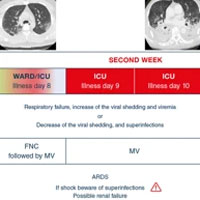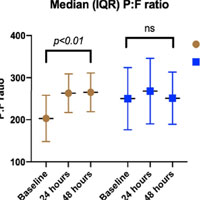Tag: ICU

Severe SARS-CoV-2 Infections: Practical Considerations for Intensivists
On December 31, 2019, China reported cases of respiratory illness in humans appearing first in Wuhan, Hubei Province, that involved a novel coronavirus SARS-CoV-2 (aka 2019-nCoV). This new emergency is a zoonotic disease... read more

Dealing with Internet-based Information Obtained by Families of Critically Ill Patients
The increasing availability of web-based health information resources should foster intensivists to step out of their comfort zone and encourage families to discuss their online discoveries. The majority of families of... read more

Survivorship Will Be the Defining Challenge of Critical Care in the 21st Century
Distracted by the high mortality rate of critical illness, we tend to overlook the essential fact that most patients survive the intensive care unit (ICU). Every year, millions of patients are discharged from the ICU... read more

Recognition, Assessment, and Pharmacotherapeutic Treatment of Alcohol Withdrawal Syndrome in the ICU
Alcohol withdrawal syndrome (AWS) is a complex neurologic disorder that develops after an acute reduction in or cessation of chronic alcohol consumption that alters neurotransmitter conduction. The incidence of AWS in the... read more

Methylnaltrexone for Treatment of Opioid-induced Constipation in Critically Ill Patients
No evidence to support the addition of methylnaltrexone to regular laxatives for the treatment of opioid-induced constipation in critically ill patients; however, the confidence interval was wide and a clinically important... read more

1 in 5 Patients Die within 90 Days After LVAD Implantation
The aim of the study was to analyze early mortality after continuous-flow left ventricular assist device (LVAD) implantation which remains high. In the EUROMACS registry, approximately 1 in 5 patients die within 90 days... read more

Relative Hyperglycemia Predicts In-Hospital Mortality in Critically Ill Patients
Unlike absolute hyperglycemia, relative hyperglycemia, as assessed by the stress hyperglycemia ratio, independently predicts in-hospital mortality in critically ill patients across the glycemic spectrum. Future studies should... read more

Critical Care Telemedicine: A Management Fad or the Future of ICU Practice?
Critical care telemedicine is a potential solution to the scarcity of critical care expertise, while quality and safe care can also be promoted through off-site surveillance, early warning capabilities, clinical decision... read more

The Faster Cooling Rate and More Stable Cooling Process in Endovascular Cooling Shorten Patients’ Time in ICU
This study conducted a meta-analysis to assess the effectiveness, stability, and safety of mild therapeutic hypothermia (TH) induced by endovascular cooling (EC) and surface cooling (SC) and its effect on ICU, survival rate,... read more

Clinically Significant Pleural Effusion in ICU
Clinically significant pleural effusion (PLEFF)—defined by a depth greater than or equal to 2 cm in a drainable location on thoracic ultrasound together with a potential adverse effect on patient progress—was detected... read more

Should We Treat Fever in Critically Ill Patients Without Acute Brain Pathology?
In one of the sessions at #LIVES2019 in Berlin, Prof. Frank Van Haren of Canberra Hospital, Australia, presented findings from the Randomised Evaluation of Active Control of Temperature versus Ordinary Temperature Management... read more

ICU Bloodstream Infections Reduced by 80 Percent
Bloodstream infections acquired in UK Intensive Care Units (ICUs) reduced by 80% between 2007 and 2012, according to research funded by Biomedical Research Centres (BRC). The findings are based on data collected from over... read more

Early Identification of Disease Progression in Patients with Suspected Infection Presenting to the ED
In patients presenting to the emergency department (ED) with a suspected infection, the blood biomarker MR-proADM could most accurately identify the likelihood of further disease progression. Incorporation into an early sepsis... read more

Glucose Variability as Measured by Inter-measurement Percentage Change is Predictive of In-patient Mortality in Aneurysmal Subarachnoid Hemorrhage
Reduced glucose variability is highly correlated with in-patient survival and long-term mortality in subarachnoid hemorrhage (aSAH) patients. This finding was observed in the non-diabetic and well-controlled diabetic patients,... read more








